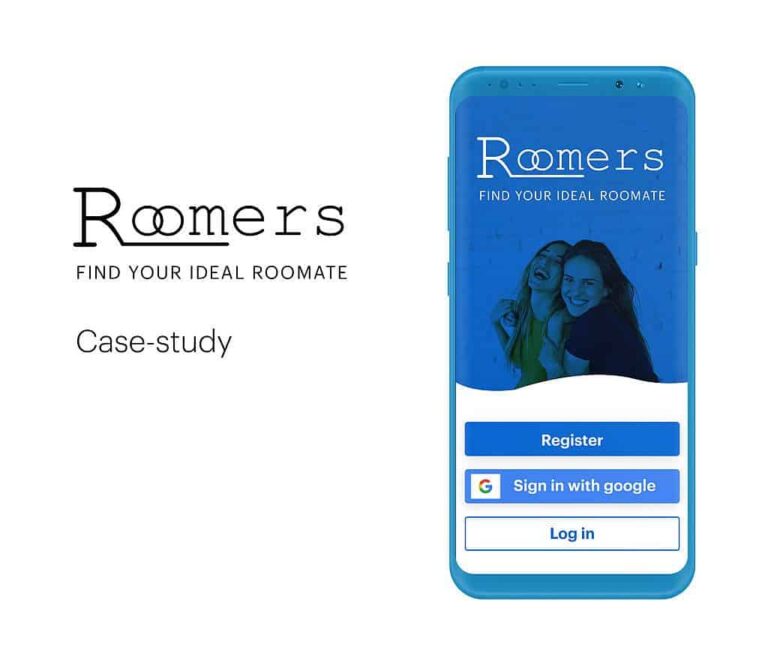It is an android app case-study, Roomers which helps peoples to find ideal roommate according to them.
Roommers helps the students and peoples who are in their 20’s right now and currently living away from their family (living in other cities or places for their study and job) to find a better roommate. Also, it helps anyone who is looking for a roommate or wants to share his room.
The sharing of the room is very crucial for people because middle-class students and city dwellers don’t have enough budget to live in a separate room.
Currently, users are directly dependent on their physical networks for finding the roommate. Even if they got a roommate through other online platforms like OLX rooms or Flatmate then chances are both partners have their limitations and problems.
For example, one person wants to keep the light on during the night for study but another one wants to sleep so that he can reach a job at the time.
Problem statement.
54% of the world’s population lives in urban communities, the average marriage age for men is 29 (increased from 26) and for women, it is 27 (increased from 23 in the same period). Given these trends, city dwellers tend to spend most of their twenties living with roommates. Finding and keeping a good roommate, however, gets harder as more people swarm into cities.
So my main goal was to design a solution that makes it safe to find the ideal roommate to nearby places.
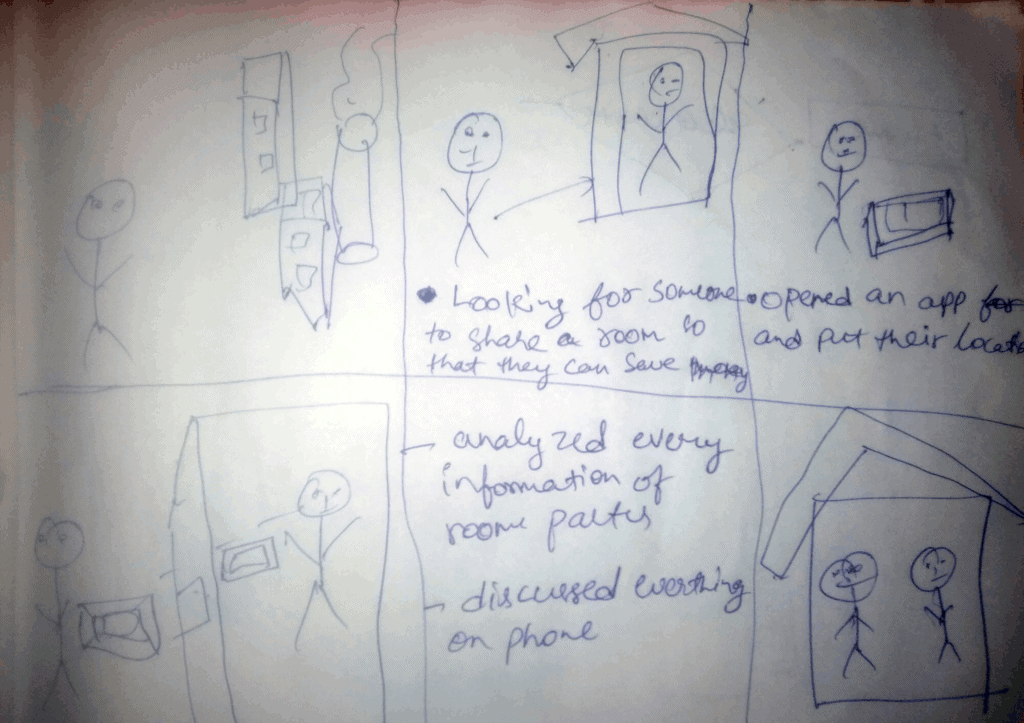
and how this will solve their problem.
When I started the project I was completely unaware of the solutions which were already in the market because I was personally never found any roommate. But when I started my research I found couples of online solutions but the problems I find in them are they all are not focused on a single micro-interaction(MVP) or in other words they are not made with just one goal in mind. They all have many features but at the same time, they lack to give the best your user experience. That’s helping the user in finding their ideal roommate.
USERS & AUDIENCE
My users are the students and city dwellers mostly who are in their early 20’s generally and wanted a roommate only. They want only two things 1) I wish I could share my room with a good guy.
2) I wish I could live with a person in a room and the person should be like a younger sister or brother. Overall they want to live with a guy who gives a sense of affinity to them.
I found only two main problems which I had already mentioned above and that problems were not mine at least not generated by myself. And that is the core problem which I found,
If you wanted to know which questions I have asked from the user then check out this link. I have jotted out the data roughly but that’s enough to understand the conversation.
Another problem which I found was, the users who are new in the city generally look for a room on rent or PG’s near them. But for now, I just want to stick to only one problem and solve it.
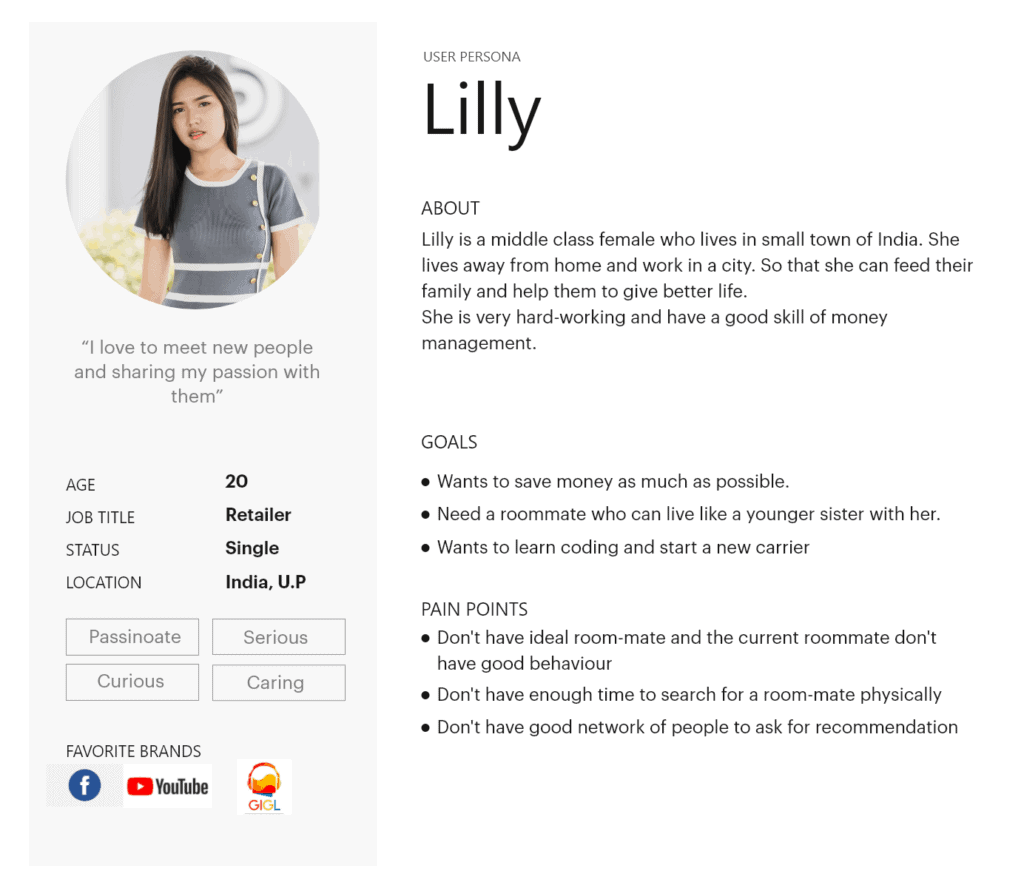
My role
I was working alone on this project without any co-worker or team.
I have done the research (user-interview) remotely due to the corona-virus pandemic.
I have done user interviewed with 3 guys and did cross-questioning with 3 extra users (why cross-questioning that’s because It was hard for me to find the perfect user who was affected with the problem and the more I will dig in-to the problem the better I will understand the problem) overall the total user was six.
My job was to do User experience design and some essence of research (User interview) for the app.
My process
I have used design thinking and lean UX methodology.
First of all, I have used empathy to understand the user by watching them and later talking with them. By using empathy I was sure that the user had the problem which they themself don’t about it.
Then, I defined the problem and I got stuck in the ideate stage because I was not sure that the user really needs the app or not. Then I had made my assumption and started to work on my own assumptions, Which is Roomers app.

So let’s start to see the process.
I had started with a simple user-flow.
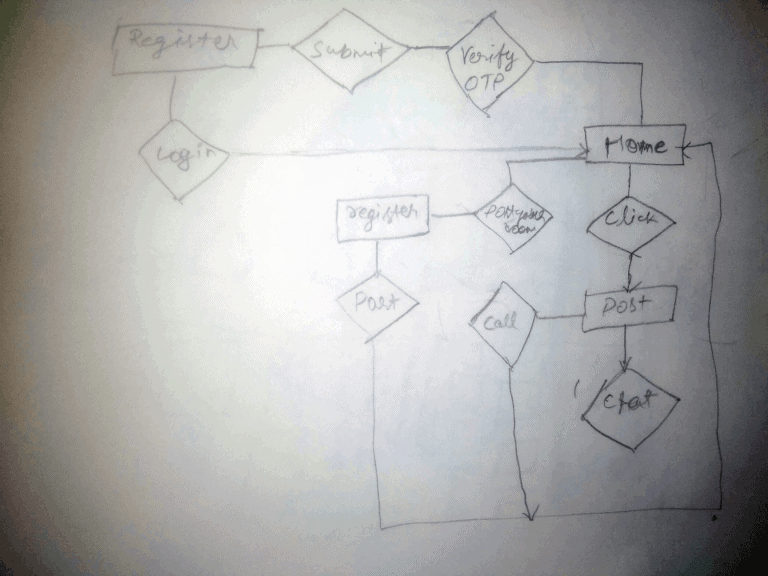
then I had created some rough sketches to put my ideas live.
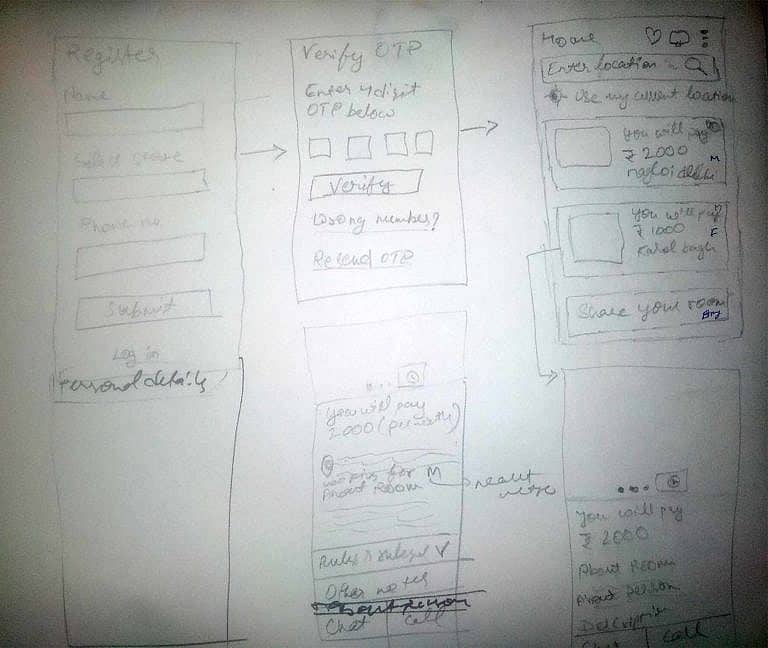
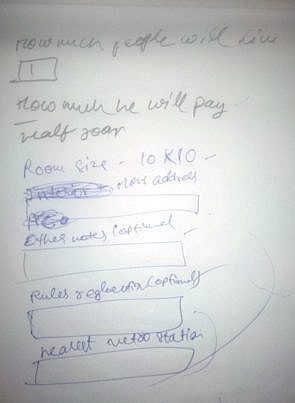
Wireflow
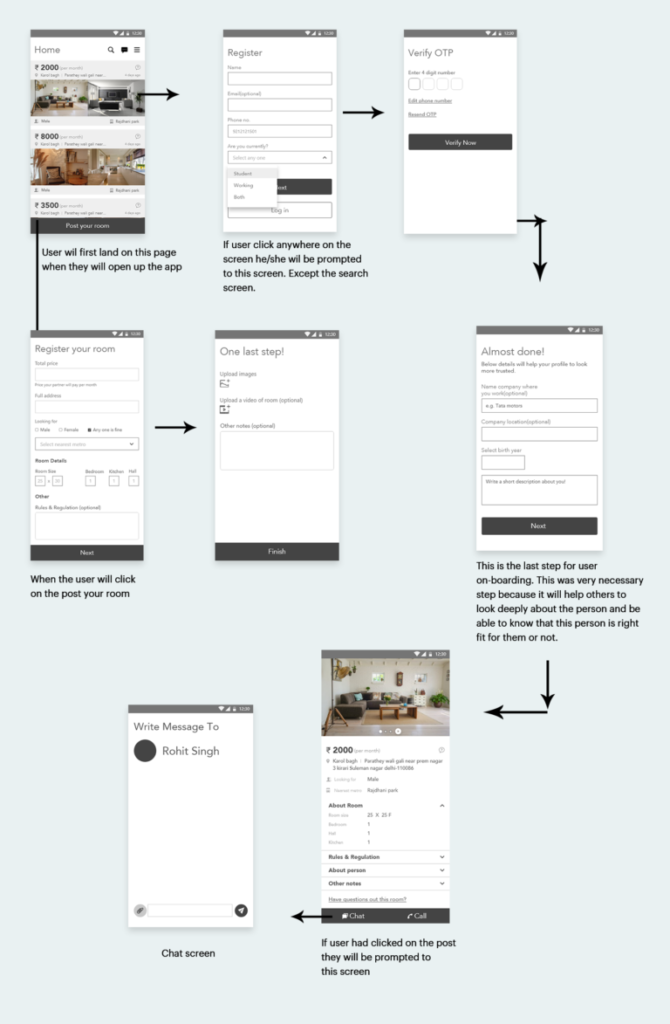
Outcomes and lesson I learned from it.
Now trusting my guts I moved forward and started to visuals of the app. but, as soon as I started to create visuals from a wireframe. I found the issue in the wireframe and fixed it! then suddenly I got another issue and this step continues as soon as I started to make the visuals. below its proof.

I want to tell one thing that improving the design every time is not a good either. If it works then we should move forward to do other things. In my case, I have not tested the app on real user thus I keep changing it again and again.
Anyway, I tried to make some visuals of the app but again same problem arise and I end up doing 2-3 screens only.

So that’s was my case study on the room finding app. I know that the visuals are not complete by the wireframe was enough to make progress further.
Thank you so much for reading…….

